The best surfer is the person having the most fun.” Or so says surfing legend Gerry Lopez. But to get to the point where you’re riding on the crest of a wave and having all that fun, surfing requires a lot of focused effort.
Paddling your surfboard out past the break zone and catching a wave demands core and upper-body strength. Bursting in one fluid pop-up motion from a prone position to standing on your board entails explosive power, flexibility, mobility, and fine-tuned balance.
And then the fun kicks in. As the Beach Boys rejoiced, “Catch a wave and you’re sitting on top of the world.” Mount Everest may be technically higher, but so far no one’s been inspired to sing about the sheer joy of climbing it.
Pro surfing coach Ximena Reynolds, a Life Time trainer in Rancho San Clemente, Calif., describes surfing simply as “addictive.” Which is all the more reason to hone your conditioning for it, whether you live close to an ocean, near one of the new-tech wave pools, or landlocked far away — but with a surfing safari on the horizon.
Many people have viewed surfing as purely recreational, but in truth it’s a complex, demanding sport. “It has taken years for surfers to understand the importance of training out of the water to stay strong and prevent injuries,” Reynolds says.
“There are two methods of training for surfing that are very effective: functional training and Pilates,” she notes. “Both methods work for the high-level competitive surfer or a beginner surfer who is trying to improve their surfing.”
The following drills can help you catch that wave.
Technique Tips & Drills
Pilates Foundation
Reynolds recommends Pilates for all surfers, but especially those who are new to the sport. “Surfing is a sport that requires feet, knees, and hips to have fluidity and connection with the board in the wave; if your muscles are tight and stiff, the fluidity doesn’t happen,” she explains.
Pilates helps improve core stability, flexibility, balance, and mind–body connection.
Drill 1: Side Planks
Your oblique abdominal muscles are key to your core strength; side planks build your obliques, which don’t get worked during typical ab exercises like crunches.
- Lie on your side, legs extended and stacked from hip to feet. Position yourself with the elbow of your underside arm directly below your shoulder. Keep your head in line with your spine.
- Engage your abs, and exhale to lift your hips and knees until your torso is straight.
- Hold for a count of 10, then return to the starting position. Work up to a full minute-long hold.
- Change sides and repeat.
(For more Pilates exercises, see “How to Up Your Pilates Game”.)
Functional Training
Instead of just building one muscle, functional training often combines several, seemingly counterintuitive exercises to enhance your body’s overall function — which makes it optimal for a full-body sport like surfing.
Drill 2: Pop-Up Workout
Your pop-up is all-important to catching a wave: If you’re lacking in the strength, balance, and mobility needed to start from lying on your board and pop up into a balanced stance, you’re likely to take an unplanned bath. Reynolds suggests incorporating three exercises, combined as a circuit, to build this skill:
- Pushups
- Planks
- Squats
Move in a fluid motion from a pushup into a plank, then jump your legs forward and leap upright into a squat. If you’re right-footed, work to land with the left foot forward, as you would on a board. If you’re left-footed (or goofy-footed in surfing lingo), land with your right foot forward. Stand up after hitting the squat position, catch a quick breath, and reset in a prone position. Repeat 10 times.
Drill 3: Building Balance and Strength
Riding a wave requires stability in all planes, and this series of functional exercises will help you develop a foundation of functional strength.
Pushups: Begin with a set of 10 pushups, either full or from your knees.
- Progress to pushups with a Bosu ball: Rest the curved face of the Bosu on the ground and hold the grips on the flat side. Perform a set of one to 10 full reps with the Bosu.
- Squats build strength in your lower body, core, and upper back — necessary for riding a board. Begin with a set of 10 body-weight squats.
- Progress to squats on a Bosu: Start with the flat side on the floor and perform a set of 10 squats standing on the rounded face.
- Finally, flip the Bosu over for more of a stability challenge. Standing on the flat surface, perform another set of 10 squats.
Getting in Tune
Yoga is Lopez’s favorite training tool for boosting both his physical conditioning and his mental focus for riding waves.
“To surf, you need that same focus that’s necessary in deep meditation,” he explains. “Surfing is a meditation exercise — and yoga absolutely heightens my mind’s sense of clarity, alertness, in-tune-ness.
“I’ve come to believe that surfing and yoga — what I thought were parallel paths — may well be the same path. And these paths are very spiritual in nature. Maybe what yoga and surfing are trying to do is to tap into exactly the same energy.” (For more on surfing from Lopez, see “Riding the Waves of Life”.)
Gear Essentials
CATCH SURF SURF WAX:
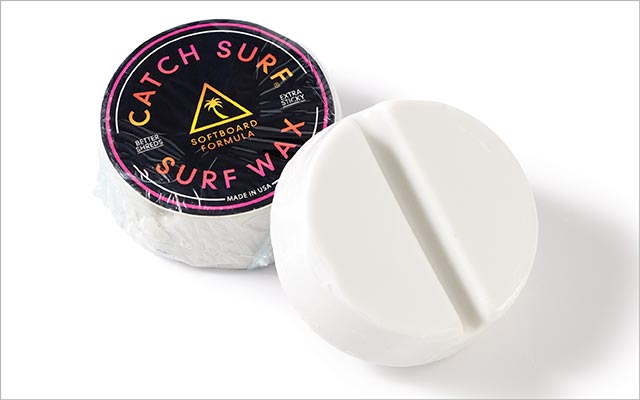
To keep your grip and traction on a wet surfboard, surf wax is almost as essential as a good wave. “Don’t leave the house without surf wax,” Reynolds –
advises. $3 at www.catchsurf.com.
QUIKSILVER RASHGUARD:
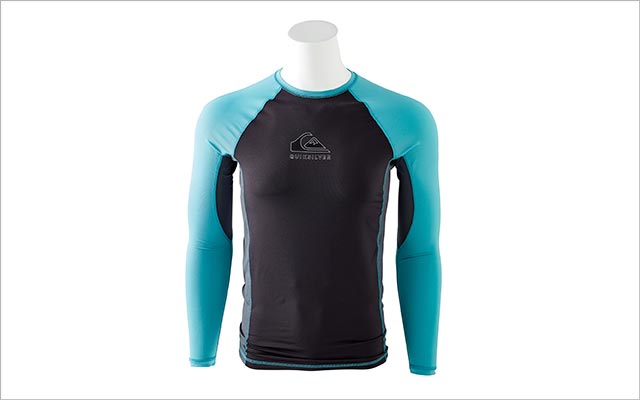
It may look like a simple T-shirt, but a rashguard will save you from painful chafing due to sand on your board or salt in the water. Plus, it’s UPF 50. $35–$40 at www.quiksilver.com.
SURFTECH SURFBOARD:
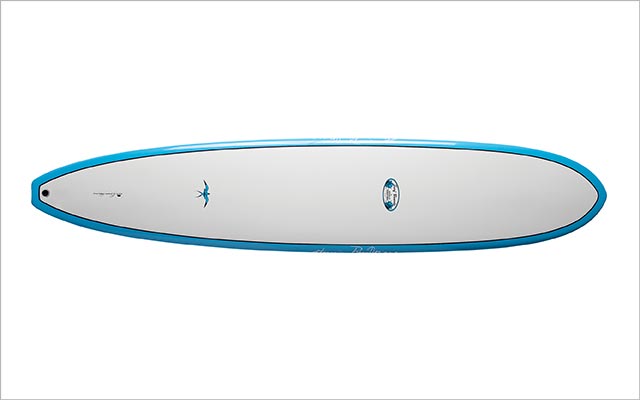
If you’re on vacation, it’s easiest to rent a board. But as you get serious, you’ll want a board of your own. Longboards offer the most stable ride for beginners. From $230–$1,500 at www.surf-tech.com.
Surfing Drills
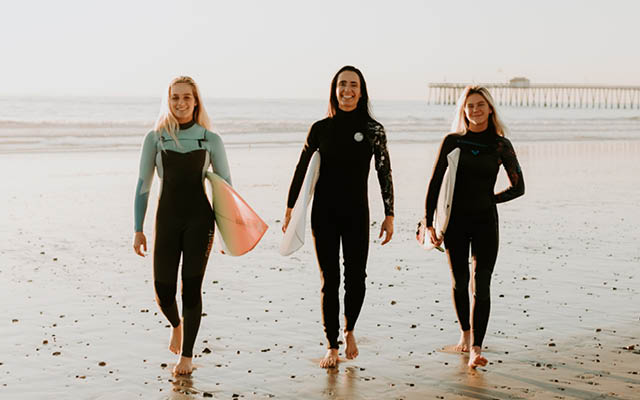
Life Time’s Ximena Reynolds is center, with two pro surfers she is training
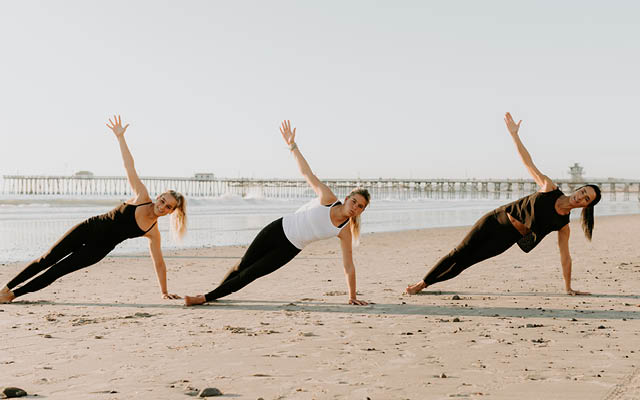
Side planks (Drill 1): Your oblique abdominal muscles are key to your core strength; side planks build your obliques, which don’t get worked during typical ab exercises like crunches.
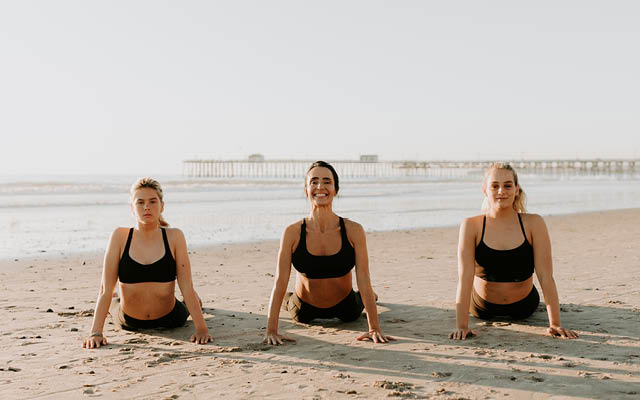
Intro (Drill 2): Your pop-up is key to catching a wave. Reynolds suggests incorporating three exercises to improve muscle endurance and strength, which you will combine into a superset: pushups, either full-body or on your knees; planks; and squats.
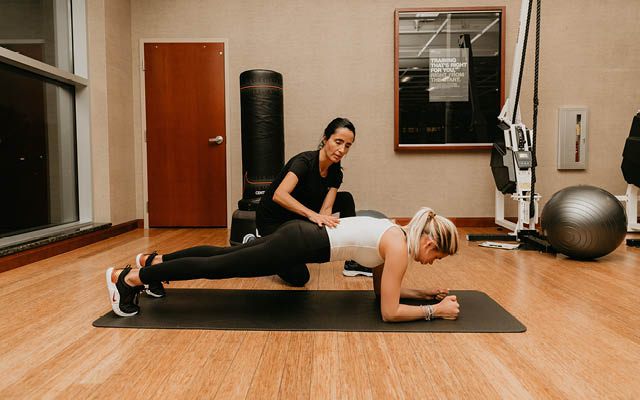
Plank Option 1 (Drill 2): Move into a plank to build core strength.
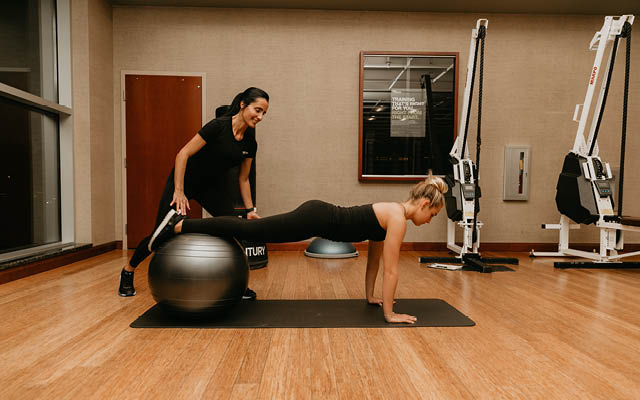
Plank Option 2 (Drill 2): You can also do planks with a ball under your feet to build core stability.
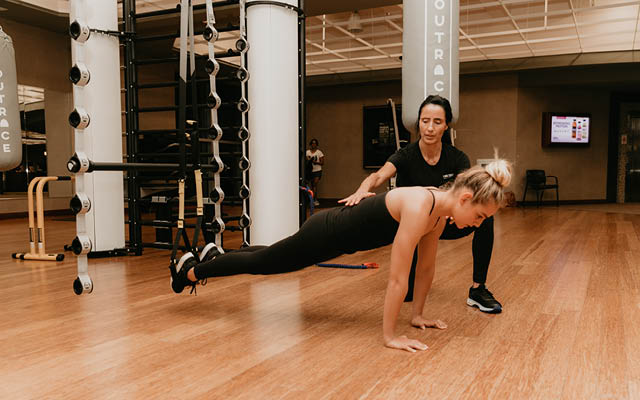
Pushups Option 1 (Drill 3): To build the core strength needed for paddling your surfboard out beyond the break, pushups are ideal — and you can progress them to TRX pushups.
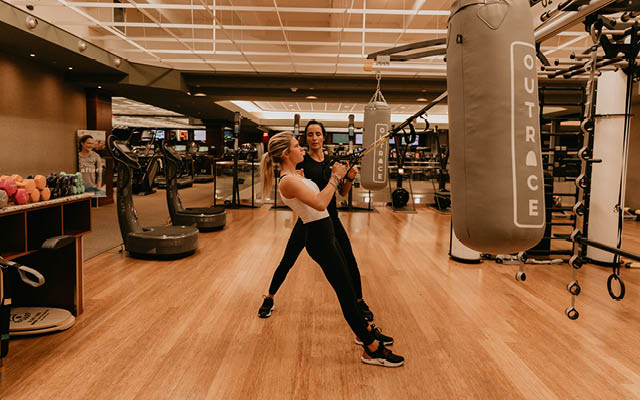
Pushups Option 2 (Drill 3): Pulls are essential to balance the push effort in pushups: TRX pulls are a great way to build the needed shoulder and upper-back strength.
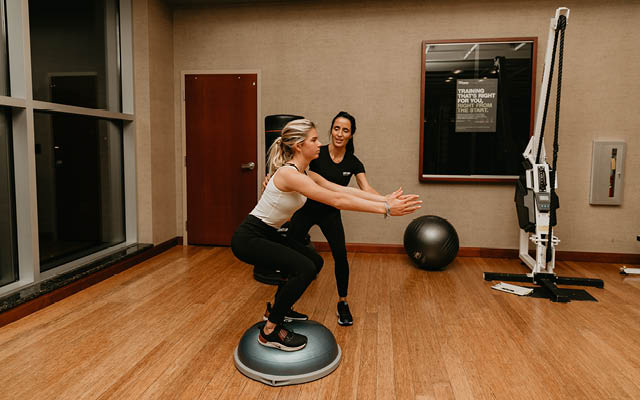
Bosu Option 1 (Drill 3): Bosu squats build strength in your lower body, core, and upper back, which is all essential for riding a surfboard. Begin by doing squats with the Bosu stable with the flat surface in the floor.
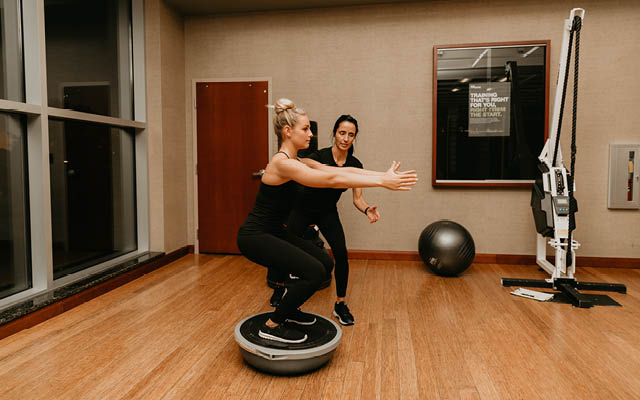
Bosu Option 2 (Drill 3): Progress to doing Bosu squats with the ball flipped over, which requires dramatically more balance and hence input from your stabilizing muscles.
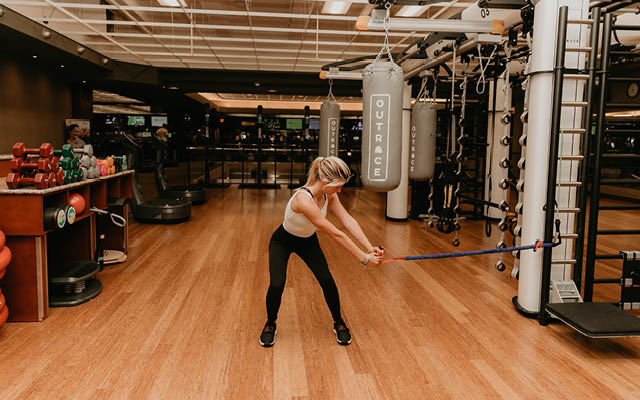
Bonus Option 1 (Drill 3): Riding a wave requires stability in all planes. For a bonus functional workout, rotational pulls are ideal for building core strength and stability.
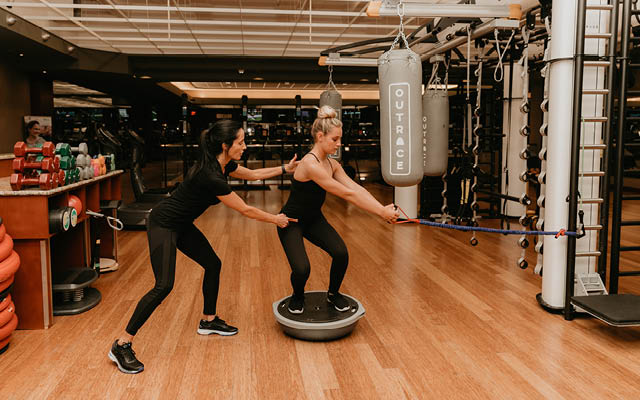
Bonus Option 2 (Drill 3): You can progress the rotational pulls by performing them on an upside-down Bosu.
This originally appeared as “Catch a Wave” in the June 2020 print issue of Experience Life.

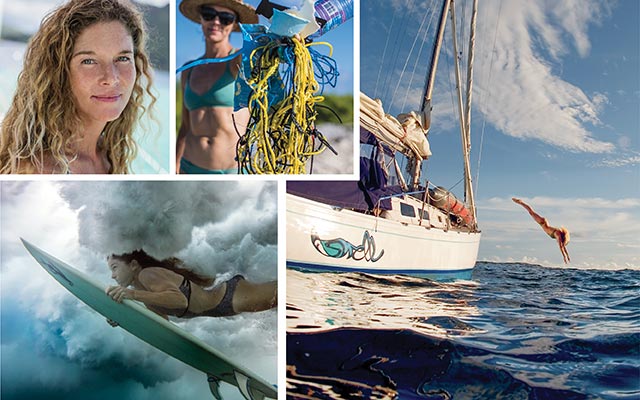
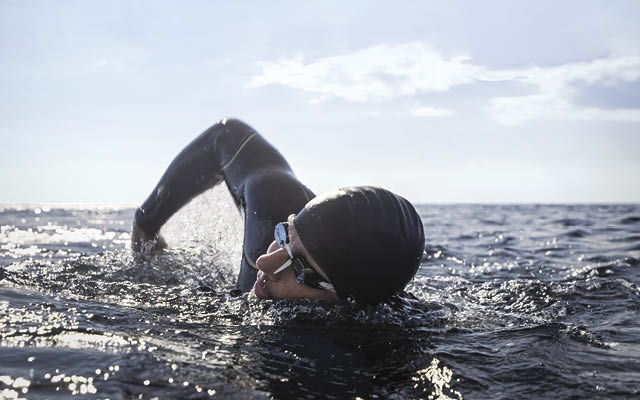
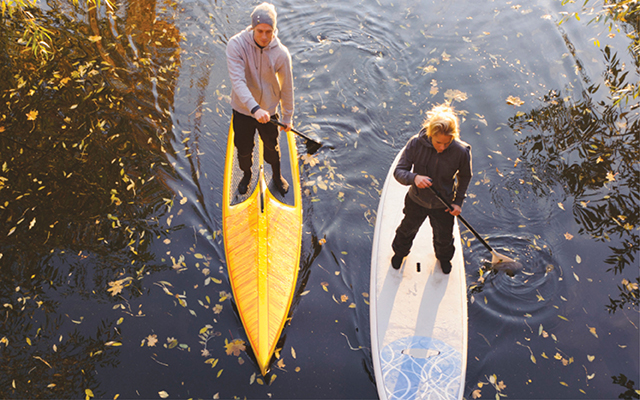
This Post Has 0 Comments